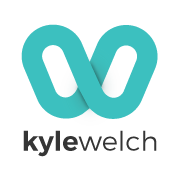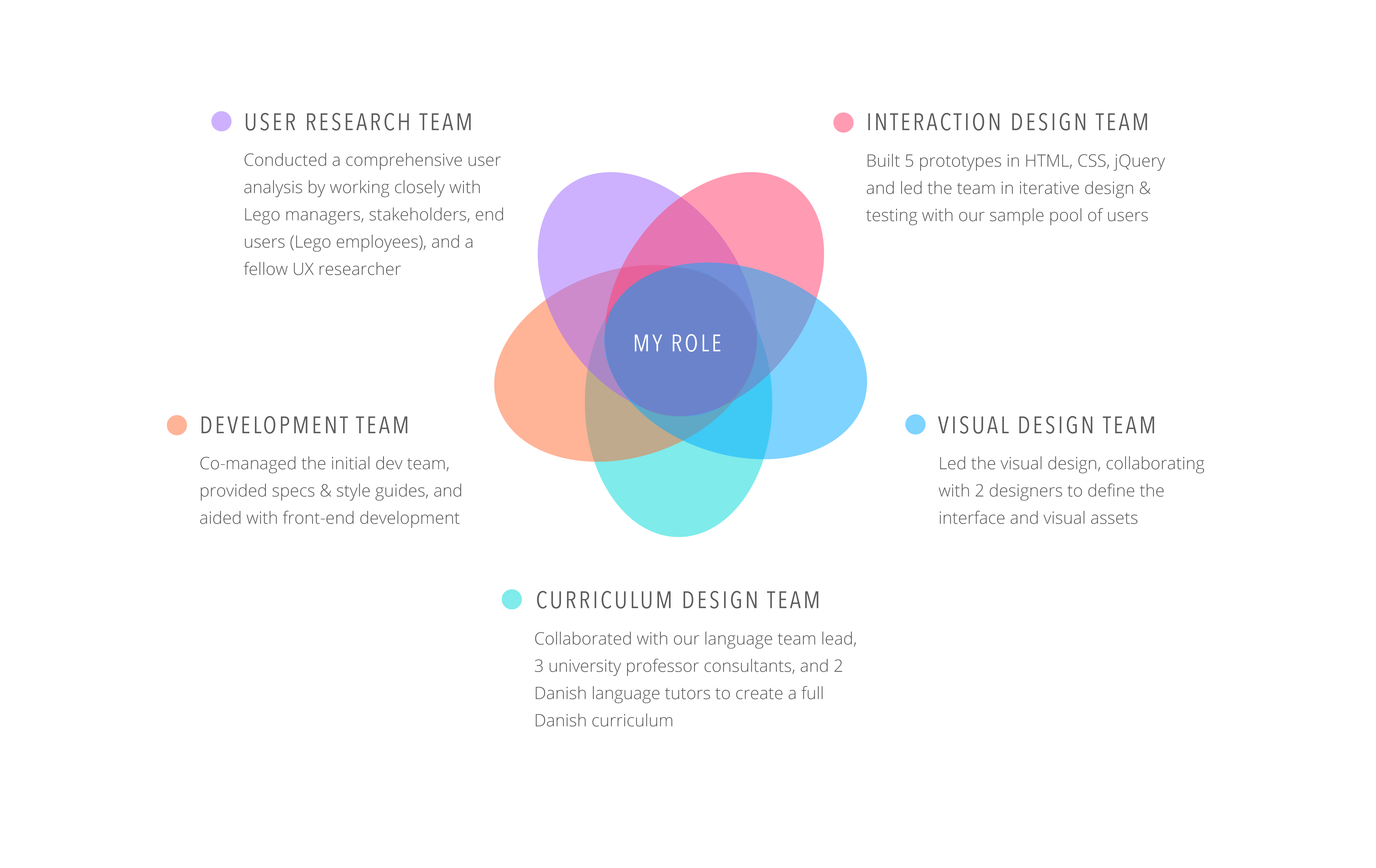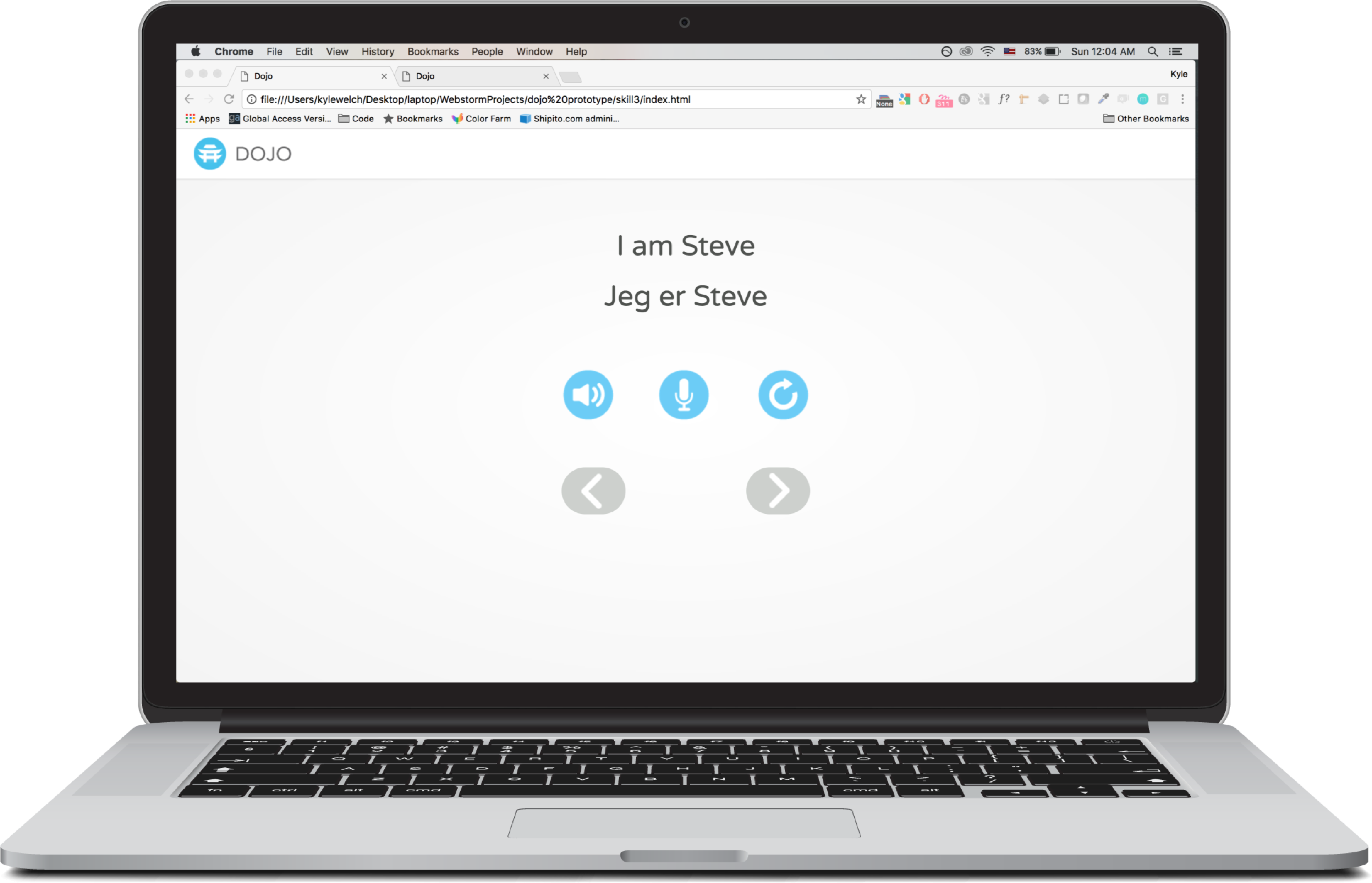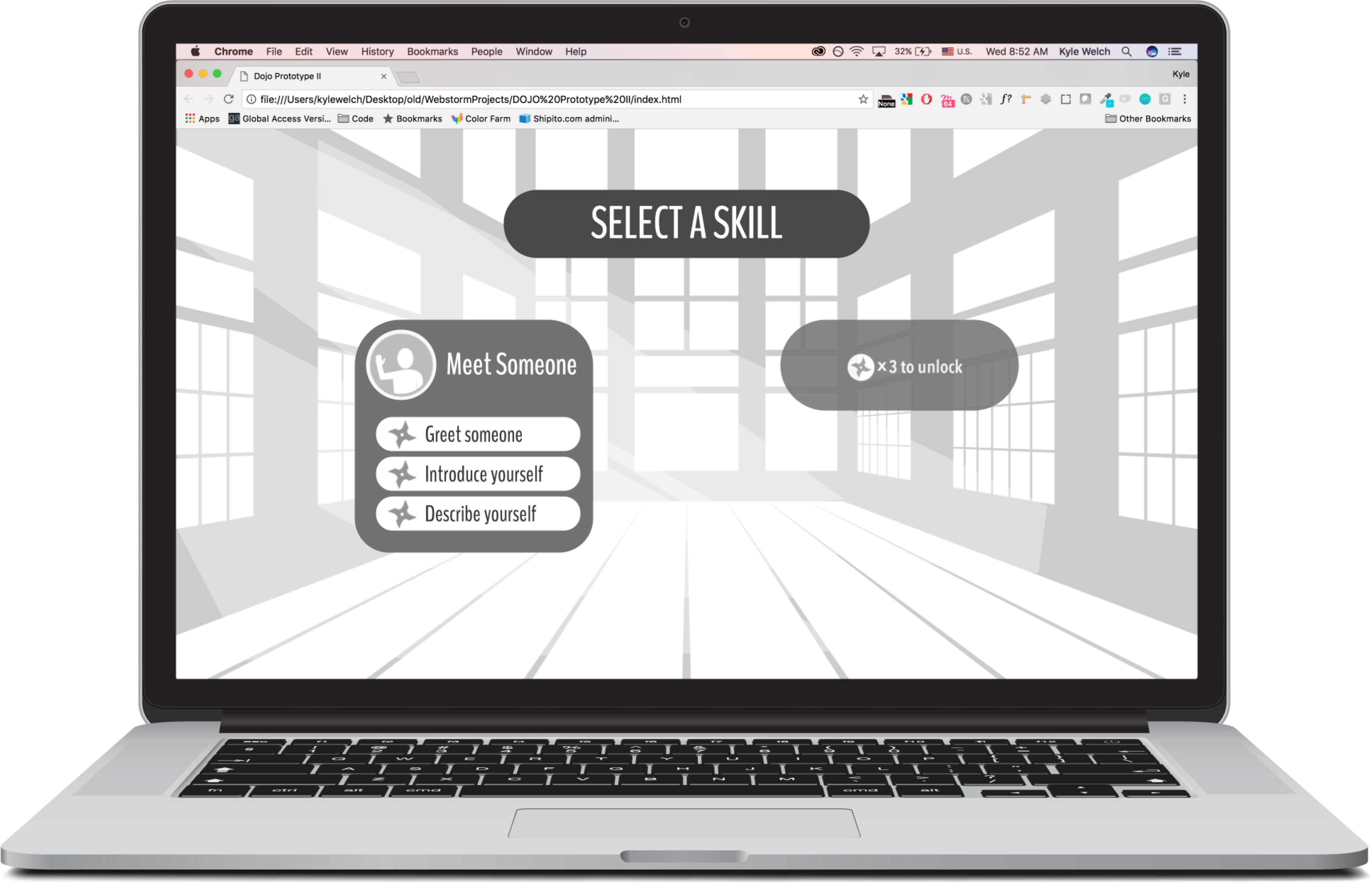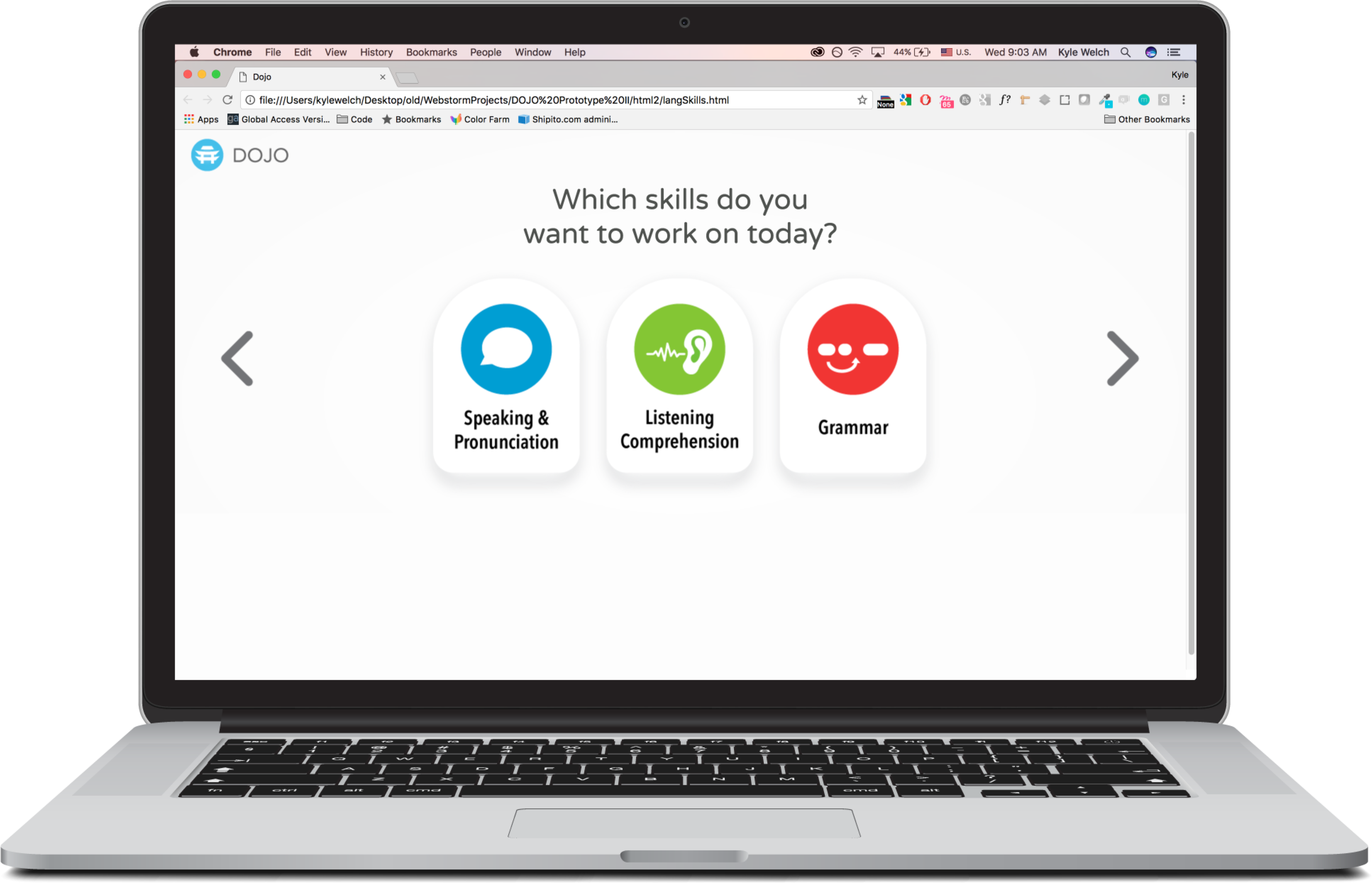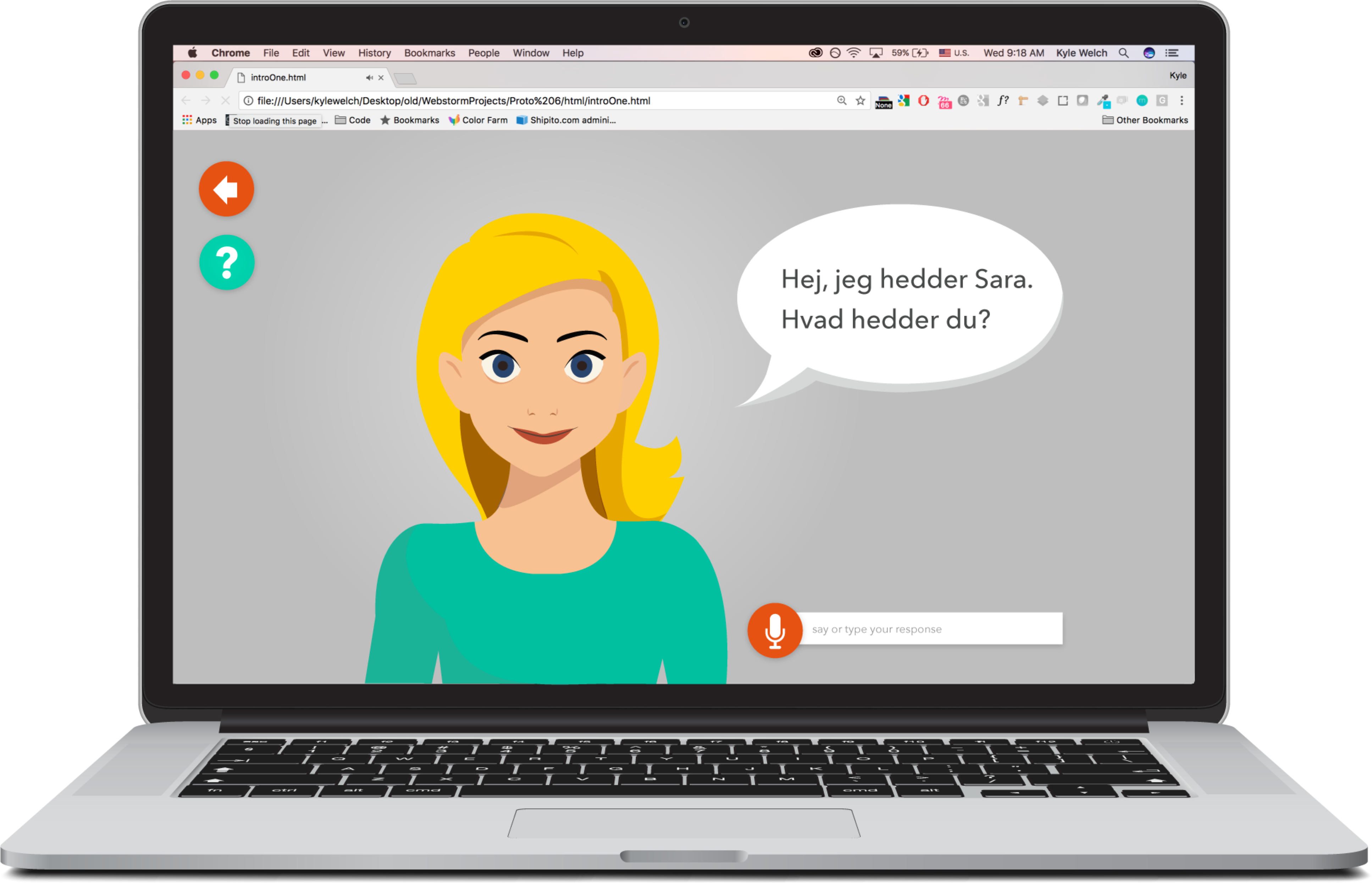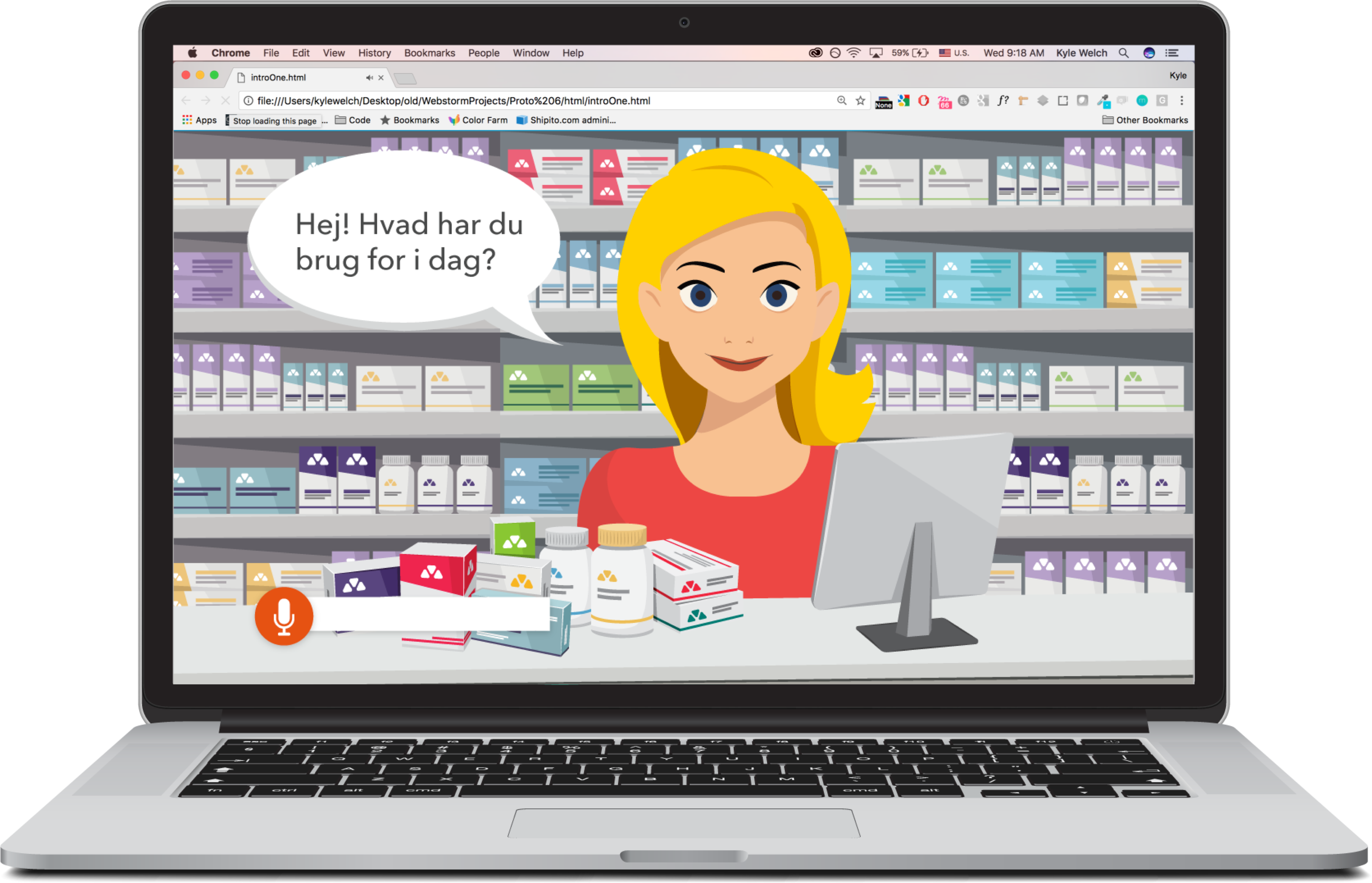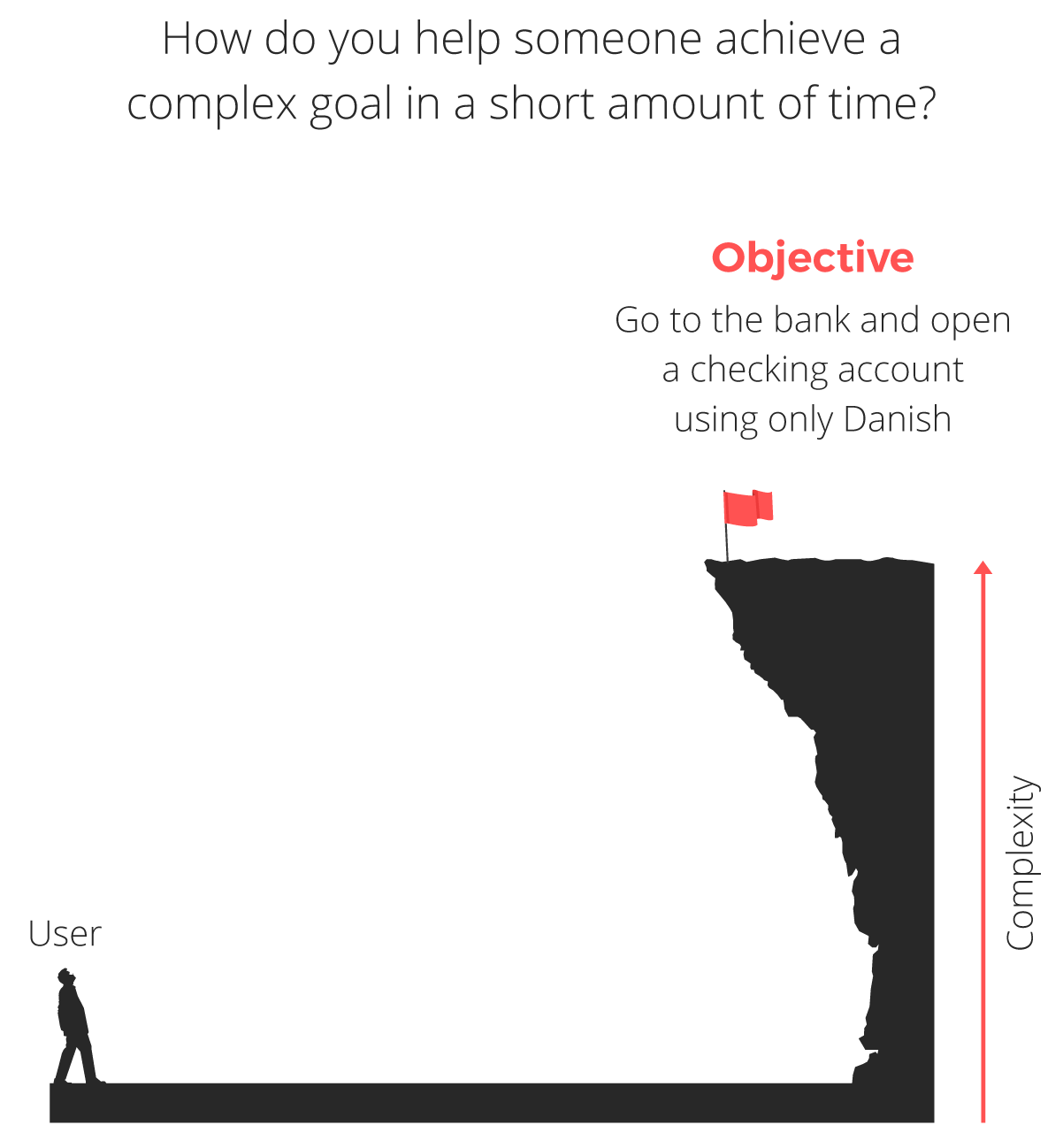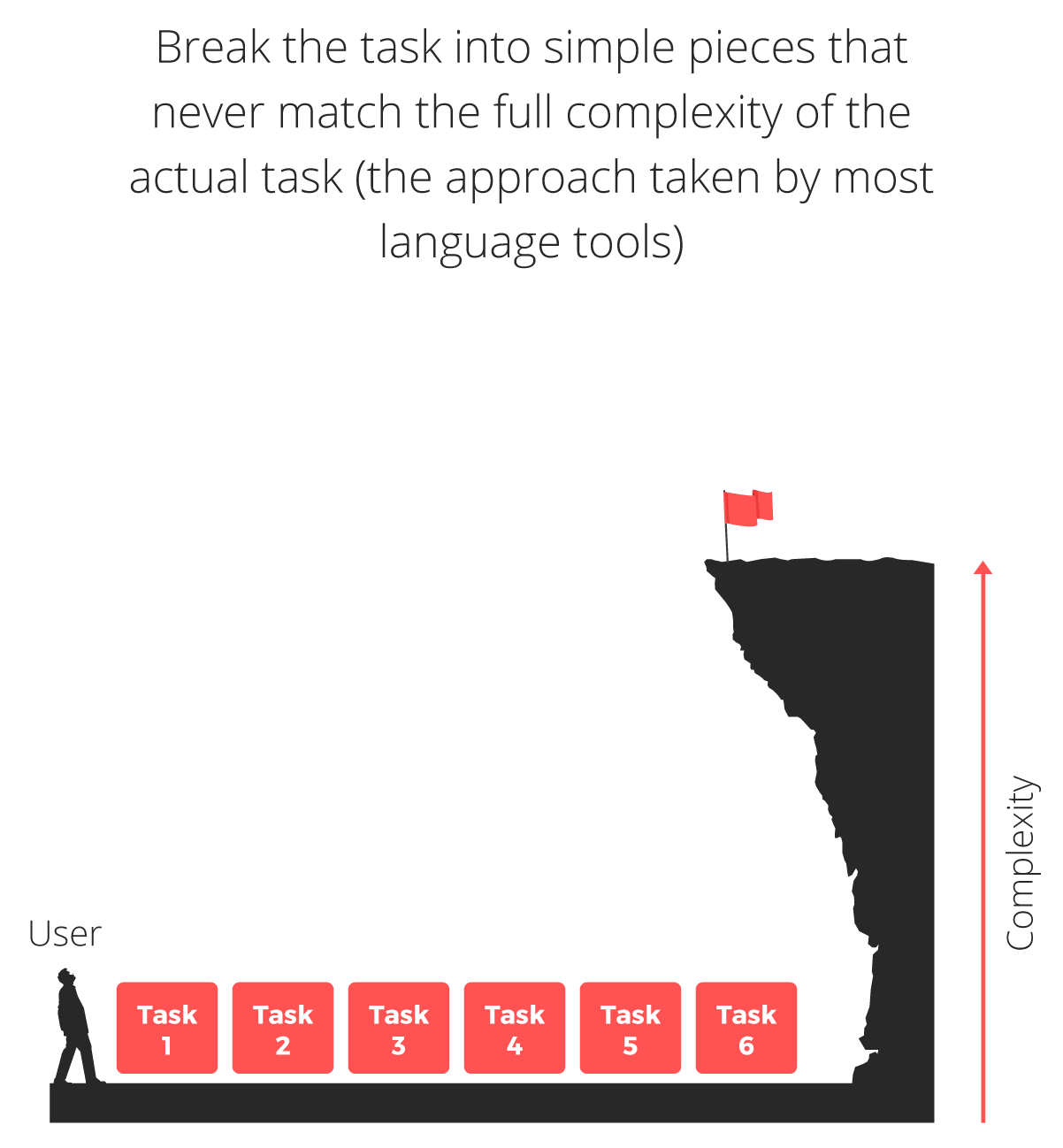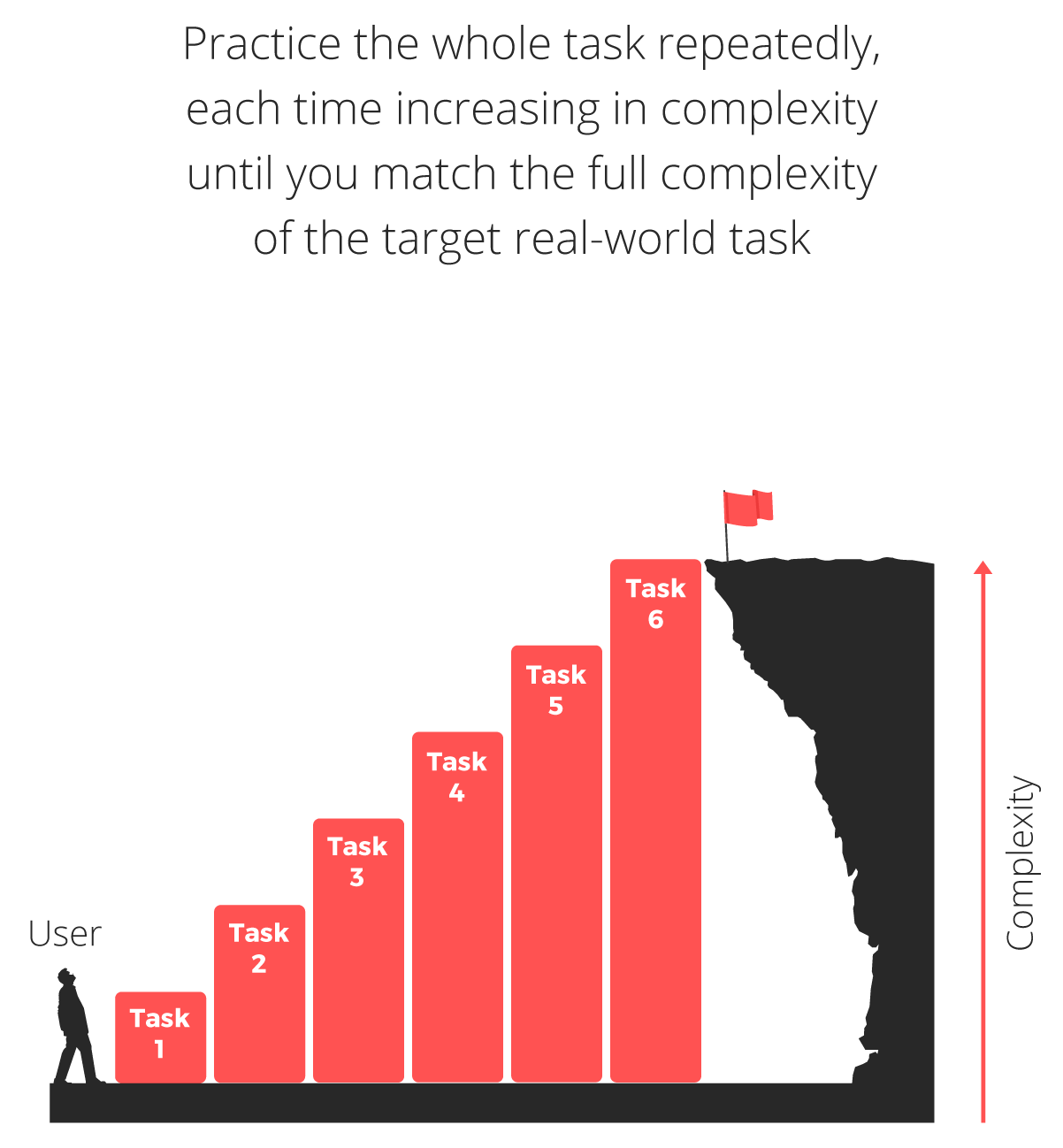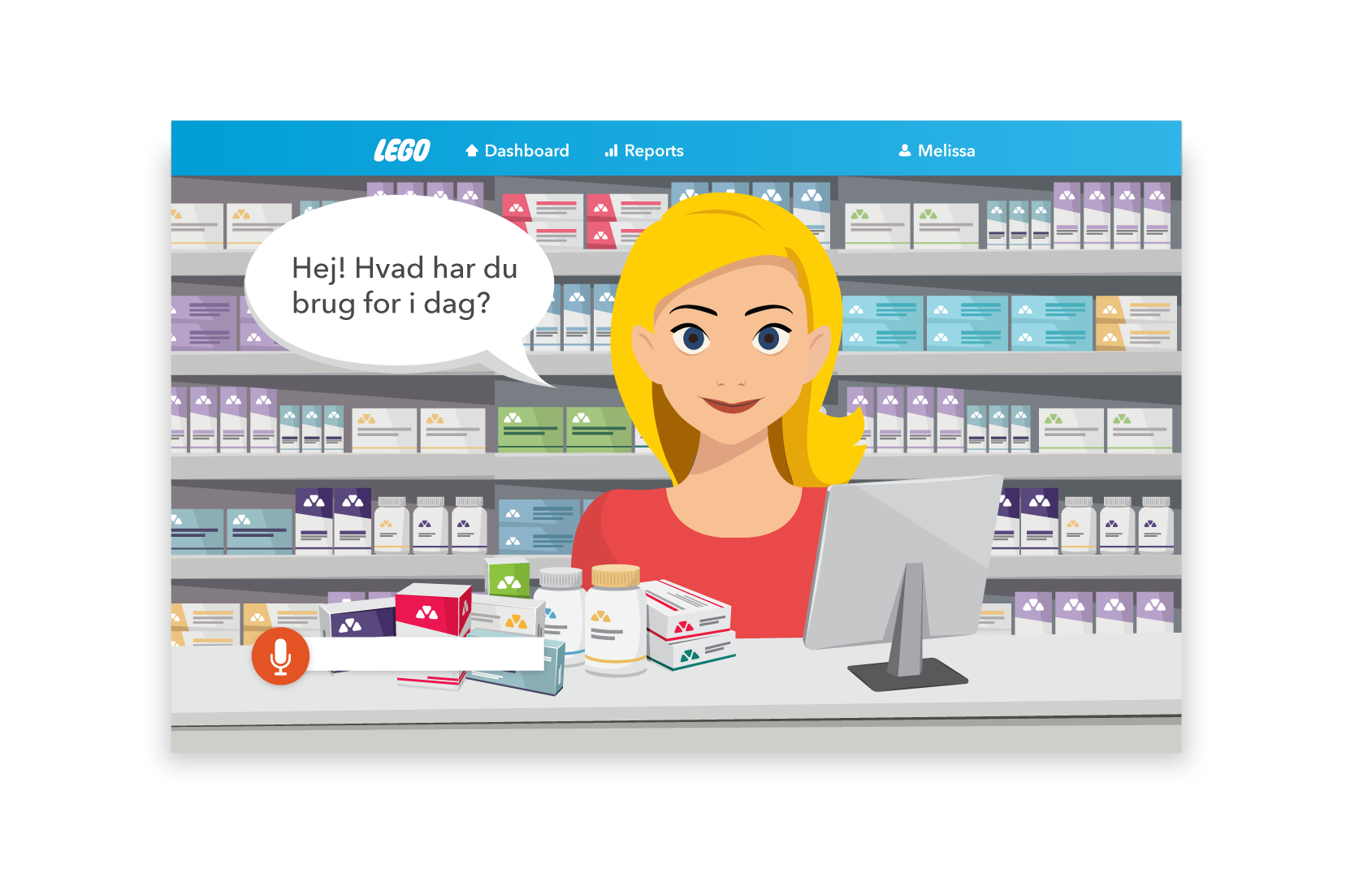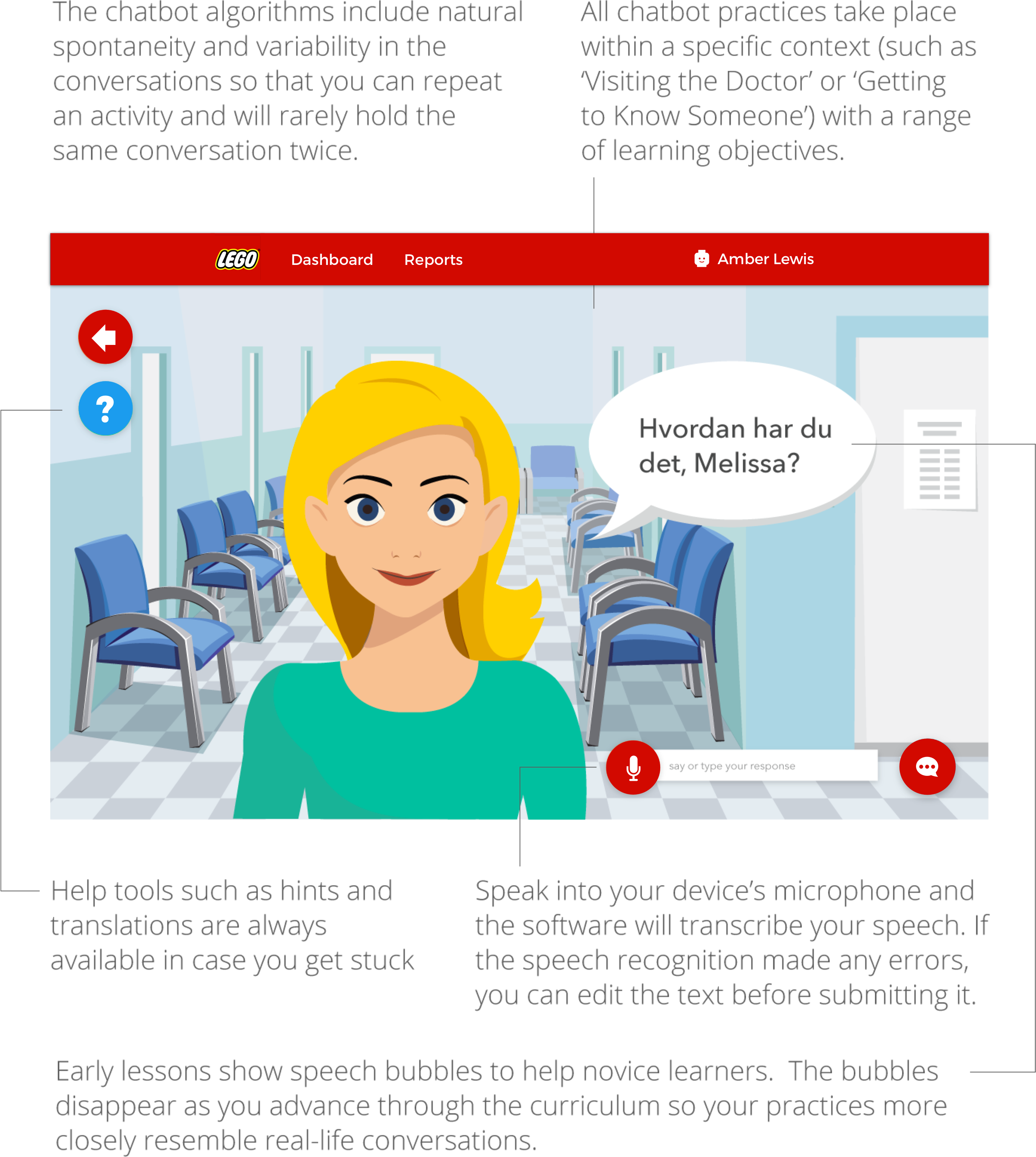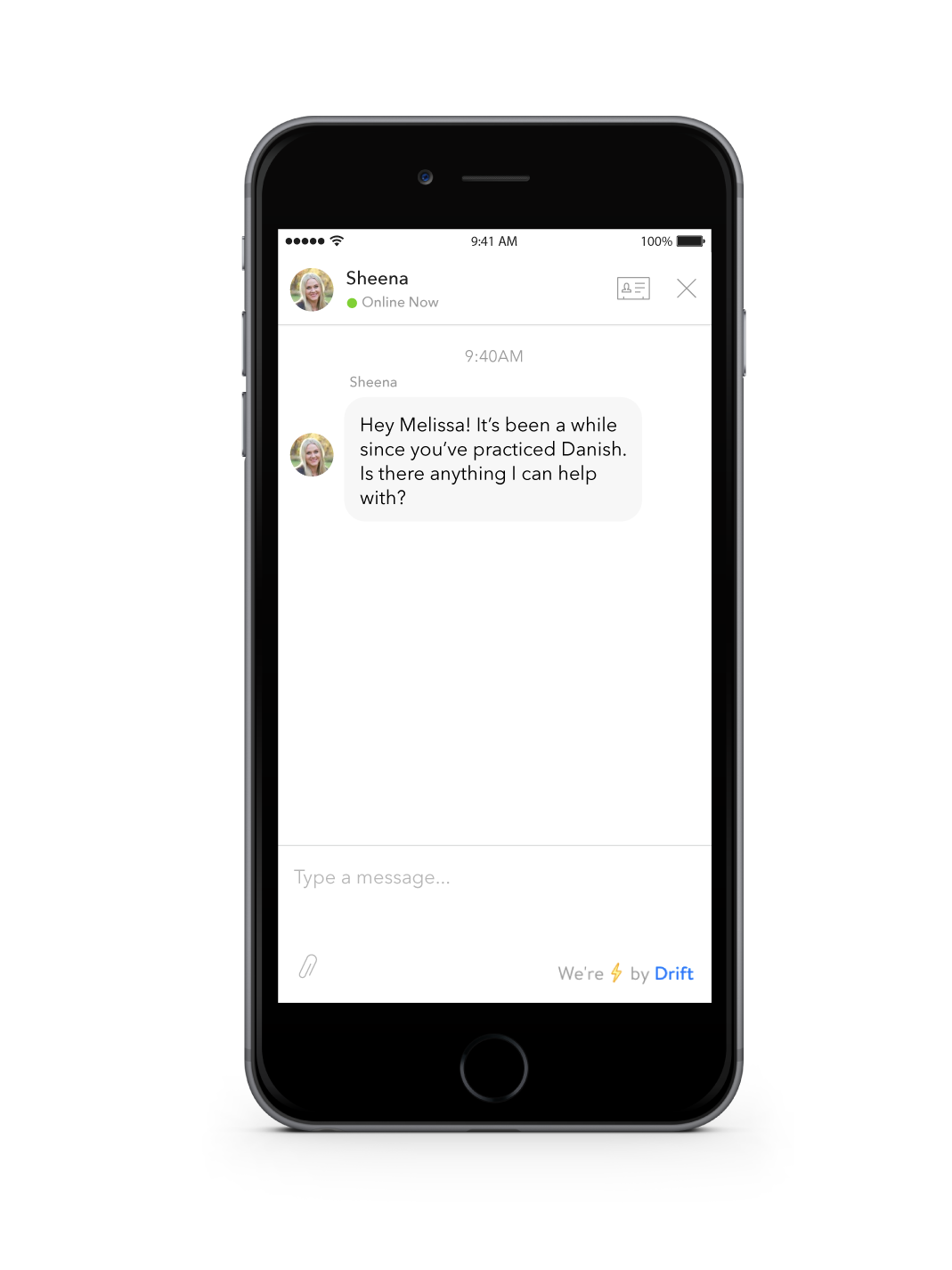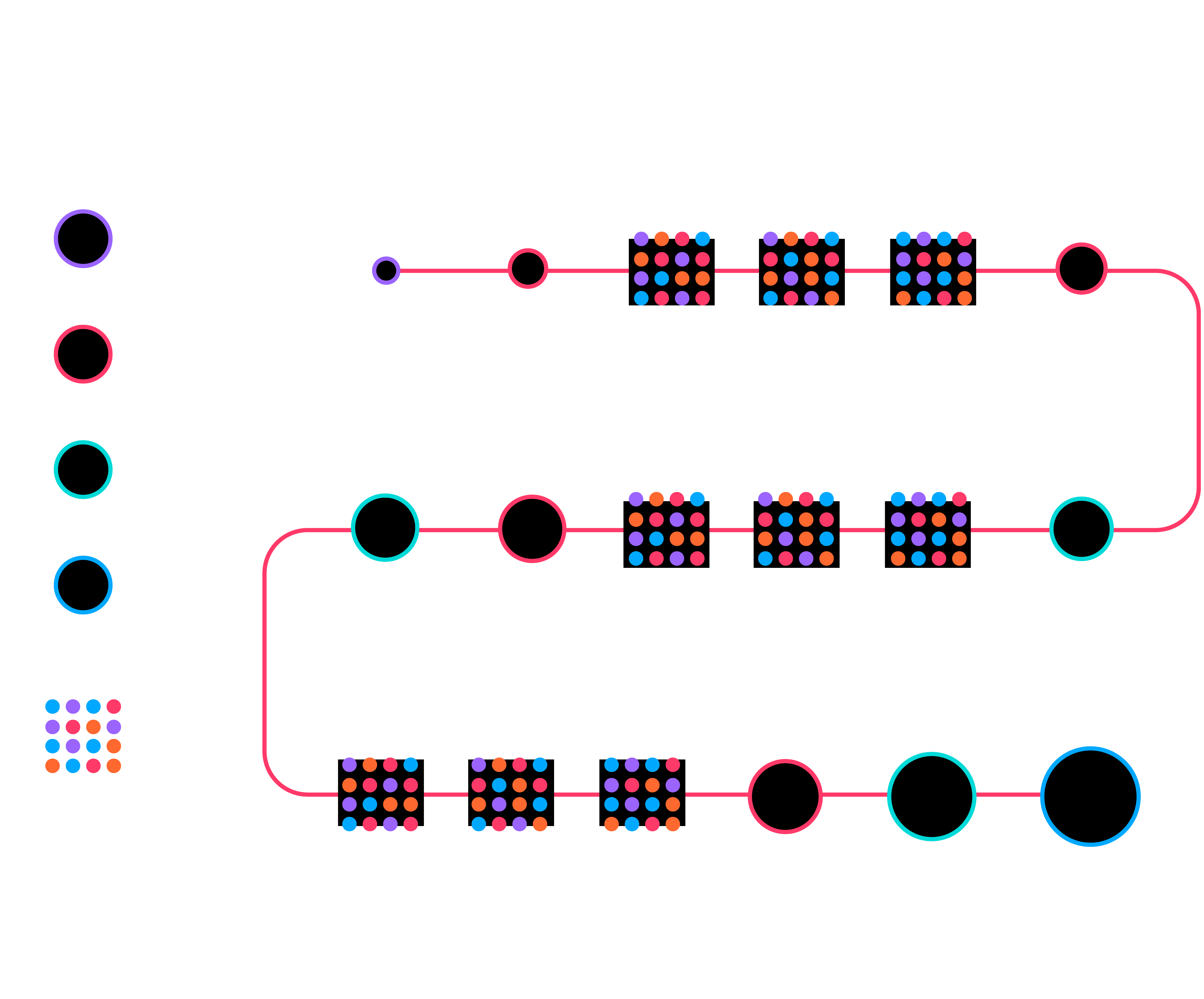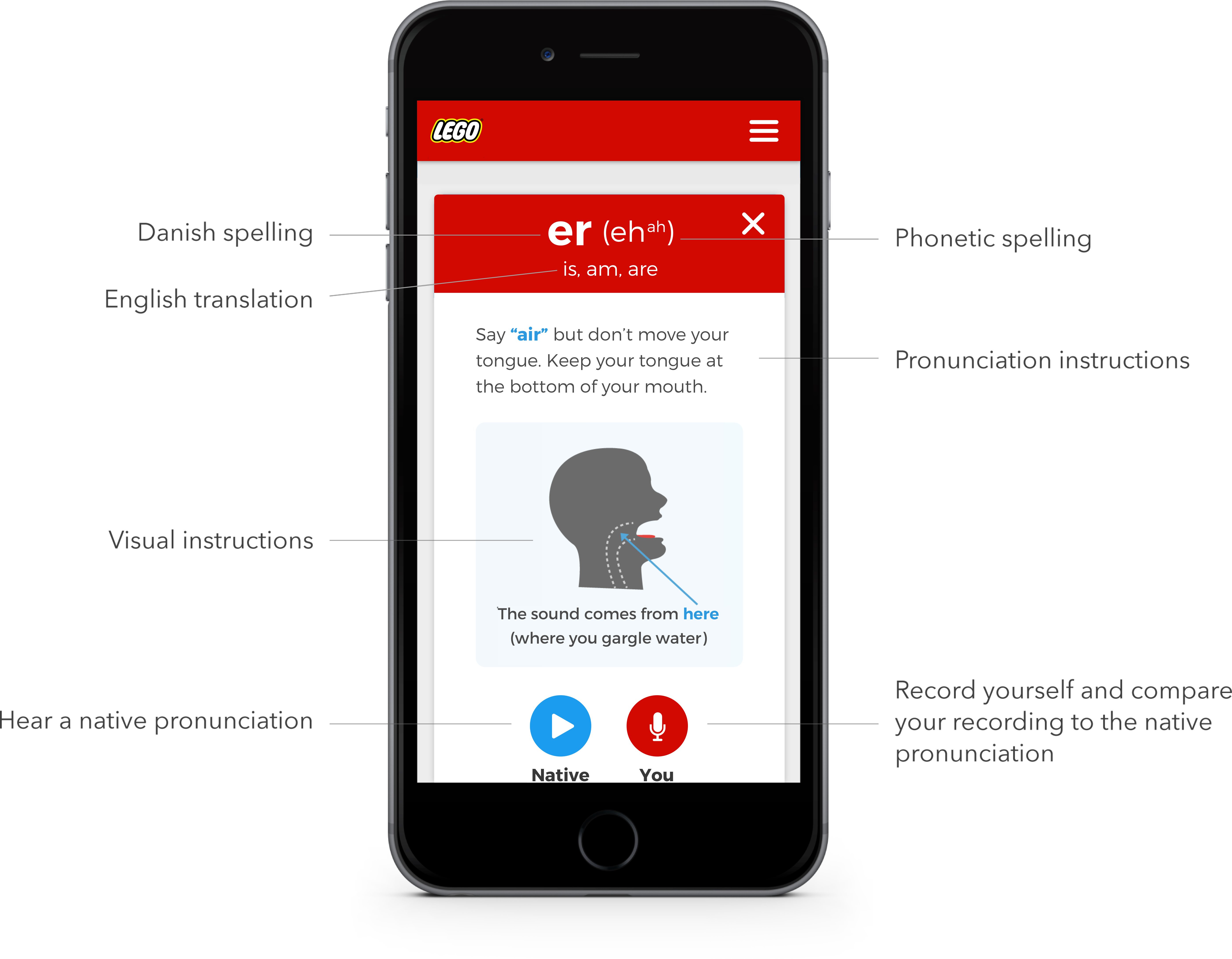Prototype 1
lo-fidelity 
Goals:
Test the inital curriculum, navigation, and content of a demo lesson
Test Results:
Very positive feedback on curriculum & content, but it was clear the lesson needed more scaffolding and automated feedback
Prototype 2
lo-fidelity 
Goals:
Introduce and test a new lesson menu, introduce a dojo-inspired stylistic approach, provide better scaffolding and in-lesson feedback
Test Results:
Positive feedback on new menu and in-lesson feedback; users expressed a desire for higher quantity & variety of assessments
Prototype 3
mid-fidelity 
Goals:
Introduce a new layer of personalization: user choice in types of skills and specific vocabulary to learn, and a greater variety of assessment types
Test Results:
The tests highlighted a deeper need for a combination of computer-graded & self-graded assessments as well as a greater emphasis on grammar instruction
Prototype 4
mid-fidelity 
Goals:
Introduce new layers of personalization, tested a sensei mascot, added additional assessment types, audio recording features, and additional grammar lessons
Test Results:
Strong positive feedback on computer-graded assessments and personalization; discovered a need for better pronunciation practice & assessments
